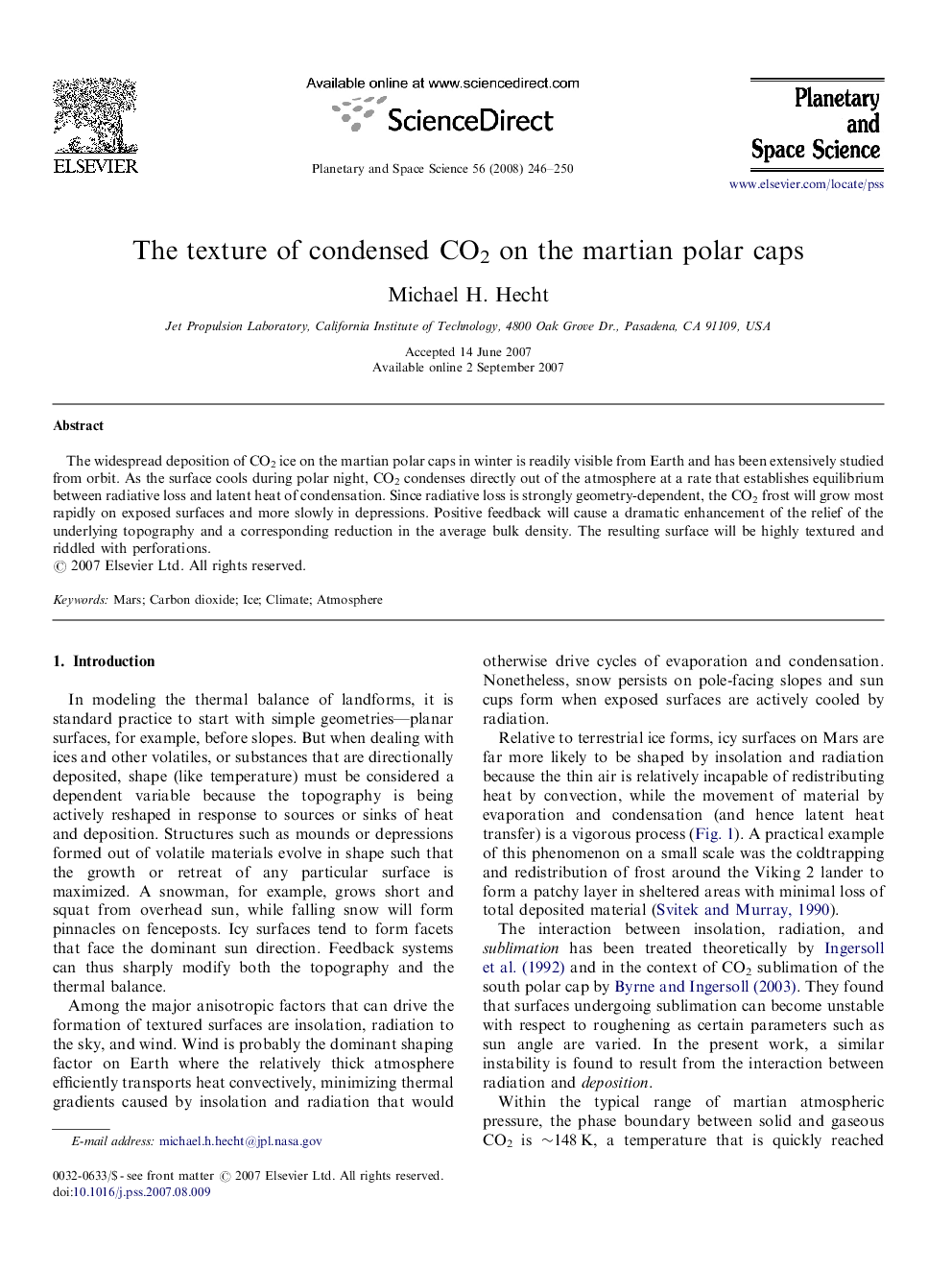| Article ID | Journal | Published Year | Pages | File Type |
|---|---|---|---|---|
| 1782815 | Planetary and Space Science | 2008 | 5 Pages |
Abstract
The widespread deposition of CO2 ice on the martian polar caps in winter is readily visible from Earth and has been extensively studied from orbit. As the surface cools during polar night, CO2 condenses directly out of the atmosphere at a rate that establishes equilibrium between radiative loss and latent heat of condensation. Since radiative loss is strongly geometry-dependent, the CO2 frost will grow most rapidly on exposed surfaces and more slowly in depressions. Positive feedback will cause a dramatic enhancement of the relief of the underlying topography and a corresponding reduction in the average bulk density. The resulting surface will be highly textured and riddled with perforations.
Related Topics
Physical Sciences and Engineering
Earth and Planetary Sciences
Geophysics
Authors
Michael H. Hecht,
